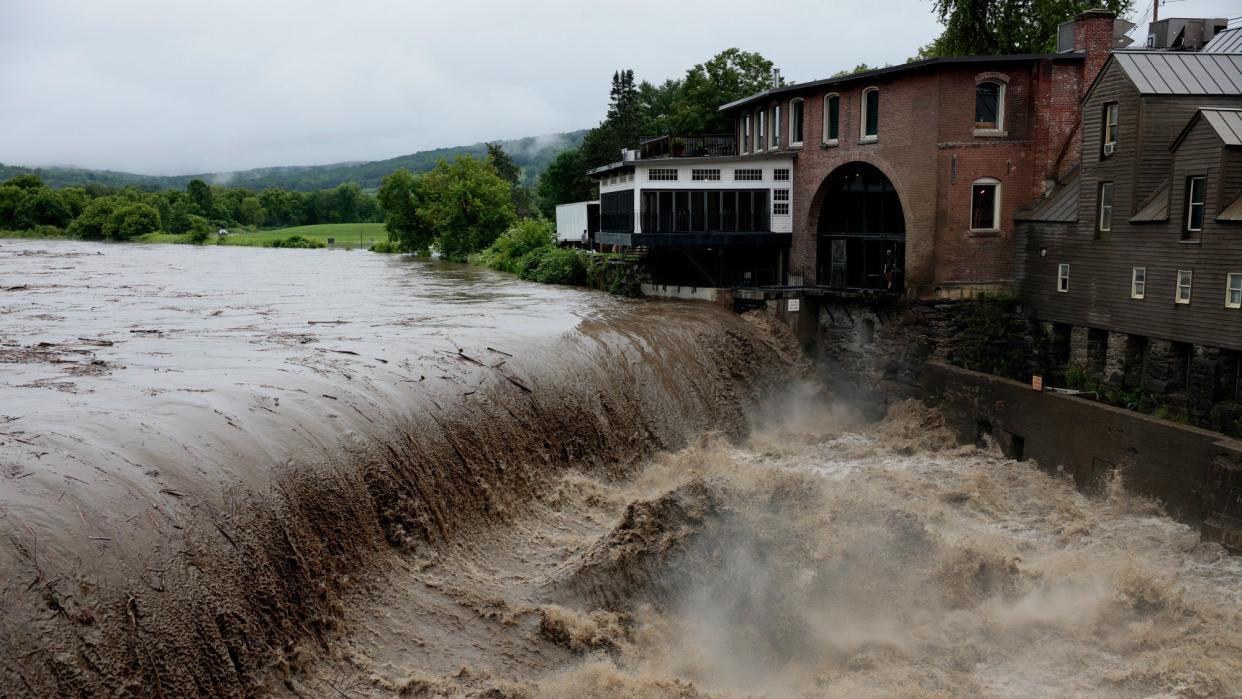Dangerous inland flooding will last for days in some Northeast states

Rescue and clean up efforts are underway in New York and Vermont after widespread flash flooding and torrential rain inundated the region over the last two days. Roadways have been washed away, multiple homes and businesses were flooded, as rivers and creek beds raged.
[Related: How disastrous floods can also lead to food insecurity.]
In New York’s Hudson Valley, up to eight inches of rain fell in some areas on Sunday, causing at least one death. On Monday, the National Weather Service said over 13 million Americans were under flood watches and warnings, as the storms stretched from eastern New York State into Boston, Massachusetts and western Maine.
The flooding was reminiscent of the devastation left after the remnants of Hurricane Irene, which moved into the landlocked and mountainous state as a tropical storm in 2011. The results flooded many of Vermont’s small and isolated towns built along creeks and rivers and killed six people.
In a news conference on Monday, Vermont Governor Phil Scott said this week’s system could surpass the amount that fell during Irene. “What’s different for me is that Irene lasted about 24 hours,” Scott said at a news conference on Monday, according to The New York Times. “We’re getting just as much rain, if not more, and it’s going on for days. That’s my concern. It’s not just the initial damage.”
Some of the worst-hit areas in Vermont included Londonderry, Weston, and Ludlow, in the southern central part of the Green Mountain State. The state capital of Montpelier was also not spared from the flooding, with the downtown area under four to seven feet of water as the Winooski River swelled. The river eclipsed the levels seen during Irene and crested at 20.88 feet on Monday in the capital. It is expected to crest in Essex Junction on Tuesday afternoon.
Vermont Emergency Management officials said rescue crews had conducted more than 50 rescues and evacuated more people and pets from flooded homes as of Monday evening.
“All our evacuations are vulnerable populations that do not want to leave. That’s what we’re seeing here, as well,” said Mike Cannon, coordinator of Vermont’s Urban Search and Rescue, according to WCAX. “This is particularly going to be difficult for us with the long rain event that we are going to experience.”
Cannon said that the help is on the way from teams in Massachusetts and North Carolina that bring with them a “large water rescue component, as well as a search component.” These teams can go into communities and do welfare checks that are expected to continue for several more days.
[Related: The future of hurricanes is full of floods—a lot of them.]
The storm is the latest example of how catastrophic flooding likely fueled by climate change can hit anywhere. The air can hold more moisture as temperatures rise, leading to more severe rainfall that floods places that aren’t situated close to major bodies of water, including states like Vermont. Experts suggest that the catastrophic flooding in Pakistan last summer that left one third of the country under water and killed over 1,000 people was exacerbated by climate change.
A 2022 study from the University of Vermont found that flooding along the Winooski River can be expected to cause more than $2 billion in property damage in the next 100 years. When climate change is factored in, the total increased to $5.29 billion. The region is home to over 140,000 Vermonters and the study found that this flooding could also become more frequent. An additional study published in October 2022 found that rain storms are getting more intense across the United States.
Burlington, Vermont has also been considered a potential future “climate haven,” as people may potentially begin to migrate away from the sea level rise-plagued coast, up to the north to escape heat, and away from the wildfire-prone Western United States. Other possible climate haven cities cited by Tulane University real estate professor Jesse Keenan in 2022 include Asheville, North Carolina, Madison in Wisconsin, and Pittsburgh, Pennsylvania.
The Federal Emergency Management Agency (FEMA) recommends that families have an emergency preparedness plan ready for floods, including where to seek shelter, evacuation routes, and a communication plan. It is also critical to never walk, swim, or drive through a flooded area and stay up to date on the latest information about water totals and evacuation.

